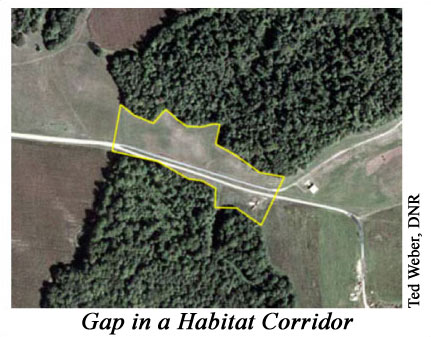Maryland's Habitat Connectivity Network
Targeting Restoration Priorities
Gaps are disturbed lands within the habitat connectivity network that produce corridor breaks or reduce interior habitat. These were evaluated for potential restoration to forest, wetland, or riparian buffers and ranked according to their ability to strengthen the ecological network and provide water quality and habitat benefits.
Gaps with hydric soils were probably once wetlands, and could be restored as such. Reforestation of gaps along streams would not only benefit wildlife, but would also improve water quality and stream stability. Stream blockages can be examined for fish ladders, bypasses, or other structures that allow fish passage.
There are numerous programs for environmental restoration, whether the focus is improving water quality, mitigating construction impacts, or offsetting CO2 emissions. By focusing restoration in gaps, multiple ecological benefits can be realized.
